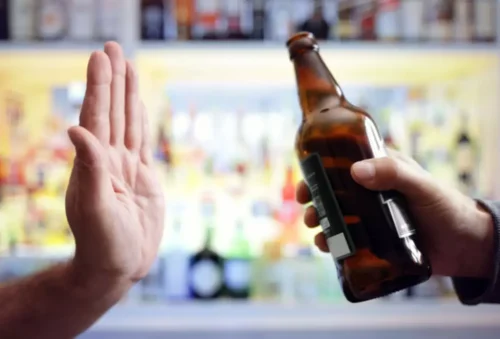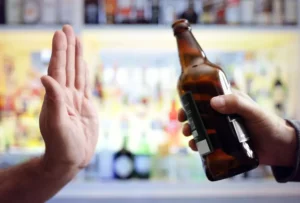
The key differential diagnosis to consider, and exclude, in these patients is DKA. Although DKA can also present with a severe metabolic acidosis, with a raised anion gap and the presence of ketones, the history and examination are quite distinct from that alcoholic ketoacidosis pathophysiology of someone presenting with AKA (Table 1). The main differential diagnoses for ketosis in our patient included AKA, starvation/fasting ketosis and DKA. In starvation ketosis, a mild ketosis is noted to develop in most after 12–24 h of fasting. Therefore, only a mild acidosis is observed in starvation ketosis. Patients typically present with non-specific features including nausea, vomiting and generalized abdominal pain.
Create a file for external citation management software

The key principle of emergency management is adequate fluid resuscitation 10. Increasing volume status and providing increased perfusion to tissues help reduce lactic acid, ketoacids and acetic acid, which would all have been contributing to the severe acidosis. Although AKA can cause a modest elevation in serum glucose, significant hyperglycaemia in patients with metabolic acidosis, the presence of ketones and a suggestive history would make DKA the more likely diagnosis. The clinical importance in recognizing AKA from DKA is demonstrated by cases of patients who were treated as DKA and developed severe hypoglycaemia as a result of inappropriate insulin administration 8. Alcoholic ketoacidosis most commonly happens in people who have alcohol use disorder and chronically drink a lot of alcohol.
Conditions
- Your doctor and other medical professionals will watch you for symptoms of withdrawal.
- Arterial blood gas analysis showed significant acidaemia with a pH of 7.10, bicarbonate of 2.9 mmol/l and lactate of 11.7 mmol/l.
- Further biochemical investigation after treatment showed a rapid decline in the level of ketones and normalization of pH.
- We strive to create content that is clear, concise, and easy to understand.
But it can happen after an episode of binge drinking in people who do not chronically abuse alcohol. Alcoholic ketoacidosis doesn’t occur more often in any particular race or sex. We present a 64-year-old female who presented with generalized abdominal pain, nausea, vomiting and shortness of breath.

Top doctors in ,
Further biochemical investigation after treatment showed a rapid decline in the level of ketones and normalization of pH. It can be helpful to understand the basic guidelines for alcohol consumption so you can determine whether you are drinking above recommended levels and engaging in potentially harmful alcohol use. Group meetings provide support for people trying to quit drinking. Meetings are widely available at little-to-no cost in most communities. Support groups can be a valuable source of support and can be combined with medication and therapy.
Alcoholic Ketoacidosis: Etiologies, Evaluation, and Management
Each of these situations increases the amount of acid in the system. They can also reduce the amount of insulin your body produces, leading to the breakdown of fat cells and the production of ketones. Subsequent fluid resuscitation and monitoring were instituted.
Health Challenges
Arterial blood gas analysis showed significant acidaemia with a pH of 7.10, bicarbonate of 2.9 mmol/l and lactate of 11.7 mmol/l. If you have symptoms of alcoholic ketoacidosis, your doctor will perform a physical examination. They will also ask about your health history and alcohol consumption.
How Is Alcoholic Ketoacidosis Treated?

This drop in blood sugar causes your body to decrease the amount of insulin it produces. Your cells need insulin to use the glucose in your blood for energy. If they can’t use glucose because there’s not enough insulin, your body switches to another method to get energy — breaking down fat cells.

Medical
We strive to create content that is clear, concise, and easy to understand. There are a variety of confidential, free, and no obligation ways to get in contact with us to learn more about treatment. If you believe you or someone you love may be struggling with addiction, let us hear your story and help you determine a path to treatment.
- Alcoholic ketoacidosis is usually triggered by an episode of heavy drinking.
- AKA can be an unrecognized cause of patients presenting with a severe metabolic acidosis, including the presence of ketones.
- The presence of a high anion gap, although not specific, is suggestive of AKA in a patient with an appropriate clinical history 9.
- Meetings are widely available at little-to-no cost in most communities.
- Alcoholic ketoacidosis can develop when you drink excessive amounts of alcohol for a long period of time.
If your doctor suspects that you’ve developed this condition, they may order additional tests to rule out other possible conditions. After these test results are in, they can confirm the diagnosis. A person who isn’t eating properly and getting the nutrition the body needs from food because they’re drinking heavy amounts of alcohol instead, starts to get a buildup of excessive amounts of ketones in the body. Alcoholic ketoacidosis is usually triggered by an episode of heavy drinking. If you can’t eat for a day or more, your liver will use up its stored-up glucose, which is a type of sugar. When your liver uses up its stored glucose and you aren’t eating anything to provide more, your blood sugar levels will drop.
Symptoms of Alcoholic Ketoacidosis
In particular, cases of AKA can be misdiagnosed as diabetic ketoacidosis (DKA). Subsequent mismanagement can lead to increasing morbidity and mortality for patients. AKA typically presents with a severe metabolic acidosis with a raised anion gap and electrolyte abnormalities, which are treatable if recognized early and appropriate management instituted. Given the increasing epidemic of alcohol-related healthcare admissions, this is an important condition to recognize and we aim to offer guidance on how to approach similar cases for the practising clinician. People who consume a lot of alcohol during one occasion often vomit repeatedly and stop eating. If the vomiting and starvation go on for a day or more, the liver’s normal stores of sugar (glucose) decrease.